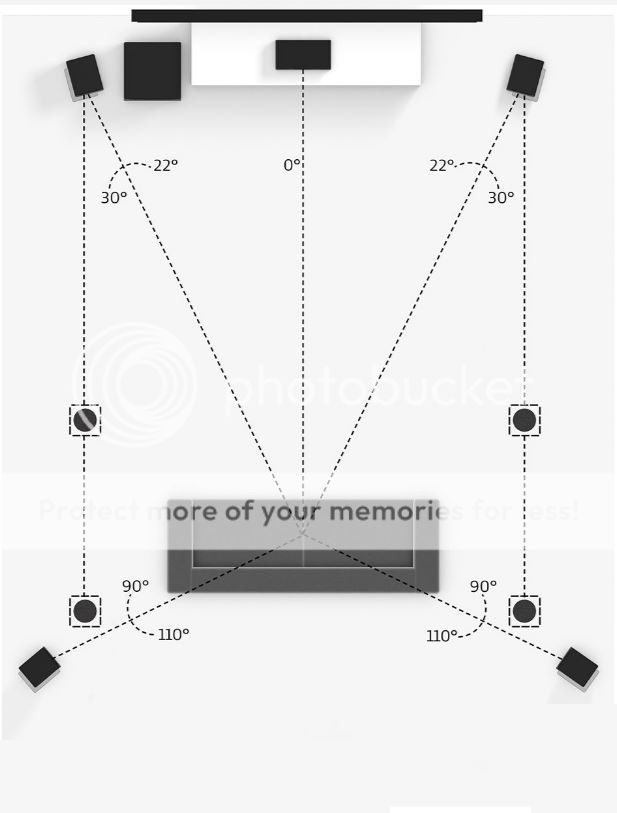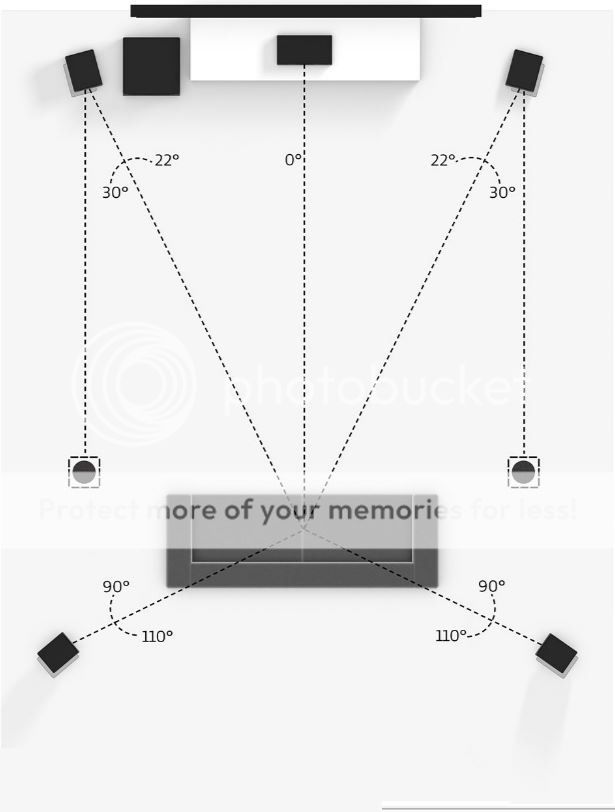I have heard a number of Atmos demos. I think Atmos really wasted the potential of object oriented sound mixes. It could have has so much more flexibility than what it does. I am very disappointed at where Dolby has taken Atmos. I am sure they don't care since they have so much marketshare, but, in my opinion, they have mostly fulfilled the most negative predictions that Gene made back when it was launched for home use. It's just a damn shame.
How has it been wasted? Honestly, it's entirely up to the film mixers to use atmos to it's full potential or not. I've heard some amazing mixes that fully took advantage of using objects that presented a lifelike 3D sound stage (a quiet place), and others that underutilized it (some of the disney mixes).
I'm not sure what you mean by flexibility, but in my my opinion, I'd say DTS X was the real disappointment in flexibility. Atmos can be adapted to all kinds of setups, reflecting speakers/soundbars, front or rear height speakers, over head speakers, etc. etc. Reading through avsforum and various reviews of different atmos modules, reflecting speakers DO work when well designed.
In addition, even on blurays and streaming, atmos is still capable of the full 118 objects if the mixer so chooses to utilize them. The fact that atmos can be sent at 384kbps on Vudu and actually work as well as it does (from my own experience) is amazing to me.
Even for those with standard 5.1 and 7.1 setups, an atmos mix still offers benefits over a traditional channel based mix. When a Dolby TrueHD track with Atmos is rendered, the renderer encodes a 7.1 downmix of the objects, a 5.1 downmix of the objects, and a 2.1 downmix from there in the same way regular Truehd sub streams are encoded, since a non atmos AVR can't decode atmos, you get a pre-baked rendering of the objects (without the heights of course) into 2.1, 5.1, or 7.1 channels. For AVRs with atmos decoding, the objects are encoded losslessly as separate sub streams and positional metadata tagged to each object is used by the renderer to determine which speaker to send the objects to. The downmixed objects are losslessly removed from the bed channels via reversed phase cancellation (is that the correct term?).
Do we have an official thread discussing all matters pertaining to these 3D Surround Sound formats?
Until recently I’ve been resisting the new 3D Surround formats.
I’m not alone. I know guys like
@PENG,
@TLS Guy,
@TechHDS, and many others haven’t made the jump either.

When I built my custom 22’x26’x14’ HT Room in December of 2016, the installers could have installed the 4 ceiling speakers for me - after they installed the other twelve (12) ceiling speakers throughout the house.

I mean what’s four more speakers, right?
Why in the world didn’t I do that and get it over with? Why resist when I know that resistance was futile? I was just being an idiot.

So now I had to crawl up the scorching attic atop my 14’ ceiling and use my 12’ ladder to install my 4 RBH VM-815/FB-C8 ceilings speakers (1” Aluminum Tweeter, 8” Aluminum Woofer, 88dB/2.83V/m, 50Hz-20kHz +/- 3dB).

I am such an idiot.

So anyway, what’s everyone thinking about this Atmos/DTSX/Auro business about 6 years later ?
1. Which ones have you experienced in both commercial and home setting?
2. Was the commercial experience better or was the home experience better?
3. Which one do you prefer?
4. Do you use Overhead Ceiling speakers or On-wall Height speakers or Add-on-Modules?
5. Do you think Four (4) Ceiling/Height/Add-on speakers are better than two (2) ?
6. What do you think is the best setup and speaker placements after seeing other systems ?
7. Do your main speakers and subs “Overpower” the Atmos speakers?
8. What are some awesome Atmos, DTS-X, or Auro-3D materials for showing off your system?


1. I think you mean which movies? I've watched A Quiet Place, Jumanji: Welcome to the Jungle, Atomic Blonde (DTS X, and a very good mix), Nerve (DTS X) Fantastic Beasts and Where to Find Them, Jigsaw (rather lame movie and sound mix), Tomb Raider, Thor: Ragnarok, Black Panther, 10 Cloverfield Lane, Spiderman: Homecoming, Blade Runner, Blade Runner 2049, Mad Max Fury Road, Source Code UHD, Guardians of the Galaxy Vol. 2, The Legend of Tarzan, Wonder Woman, Ready Play One, and Suicide Squad. In all cases, the atmos mix was far superior to any mix I've ever heard in standard 5.1/7.1. I haven't yet had the chance to experience atmos in a cinema yet.
3. Outside of Atomic Blonde, most DTS X mixes have been underwhelming. On paper and in practice, Atmos is the superior format to all three, and I'm happy that it's become the standard go to for immersive audio mixes. I think the other important consideration that has led studios to prefer Atmos, outside of the fact that Pro Tools now natively supports it, is the fact that streaming media is going to end up replacing physical media. Atmos is the only immersive audio format that can be streamed using a lossy codec.
4&5 can be answered simultaneously. I have only used a 5.2.2 setup, but I have experimented with top front and front height placement, as well as "middle/side height" as well. In my experience, 5.1.2 really only works well when the speakers are placed in the middle position, at about 80-65 degrees of elevation. If it is impossible to install speakers in or on the ceiling, mounting speakers on the side walls and angling them towards the listener is the next best thing. The only way this might be a problem is if your room is extremely wide in comparison to the length, (for example, let's say your setup is on the long wall of a 25x15x8 room). You really want a minimum of 30-45 degrees elevation side to side or your brain will likely perceive them as just high surrounds. as far as front and rear heights go, i think they'd work fine so long as the system is a 4 height system.
As for the major difference between 2 and 4 overheads, the major downfall of having only two heights is a lack of front to back panning of overhead objects. 95% of the time this isn't noticeable, and mainly only applies to things like front to back flyovers.
6. I think sticking to the suggested layouts on dolby's website is the best practice, but myself and others will say, ANY atmos, even compromised atmos such as side heights, or (decent) modules is better than no atmos. Just use as many speakers as you can afford/fit and try to get them placed as closely to the recommended guidelines as possible.
7. Nope, there are two things that could potentially cause this to happen. The first is obviously using small speakers that are incapable of providing the same dynamic range of the main bed speakers, the second would be improper delay/level setup in the AVR or a massive timbre mismatch. IME Audyssey does a damn good job conforming all speakers to their target curve, eliminating timbre differences for the most part, so if you use Audyssey, you shouldn't have to worry about that.
Improper level and delay settings can make the sound stage biased towards wherever the first arrival/loudest signal comes from due to the Haas effect. Audyssey generally does okay properly setting the distance/spl levels but its best to verify it both with an spl meter and by ear. What I generally do is play pink noise on my avr and enable something like "all channel stereo" or "full mono" so that the same signal comes from all speakers simultaneously. sitting in the center most position (the initial Audyssey measurement position), the location of the sound should appear to sound like it's either coming from right between your ears or no specific location. If it's biased to one side or the bed/height channels, either the trim or delay settings are wrong.
To diagnose whether it's a trim mismatch or a delay mismatch, you can use separate pink noise files generated via REW. one lowpassed at 1khz, and the other highpassed at 500hz. Our ears primarily detect direction based on phase using low frequencies, and use loudness as a determinant of direction with high frequencies. If only the highpassed pink noise sounds directionally biased, but not the lowpassed pink noise, it's a trim mismatch, if both sound off, it's a delay mismatch.
8. For a lively atmos mix or dts x mix that take full advantage of the immersive formats, 10 Cloverfield Lane, Fantastic Beast and Where to Find Them, Atomic Blonde, and A Quiet Place would be my top picks out of that list.